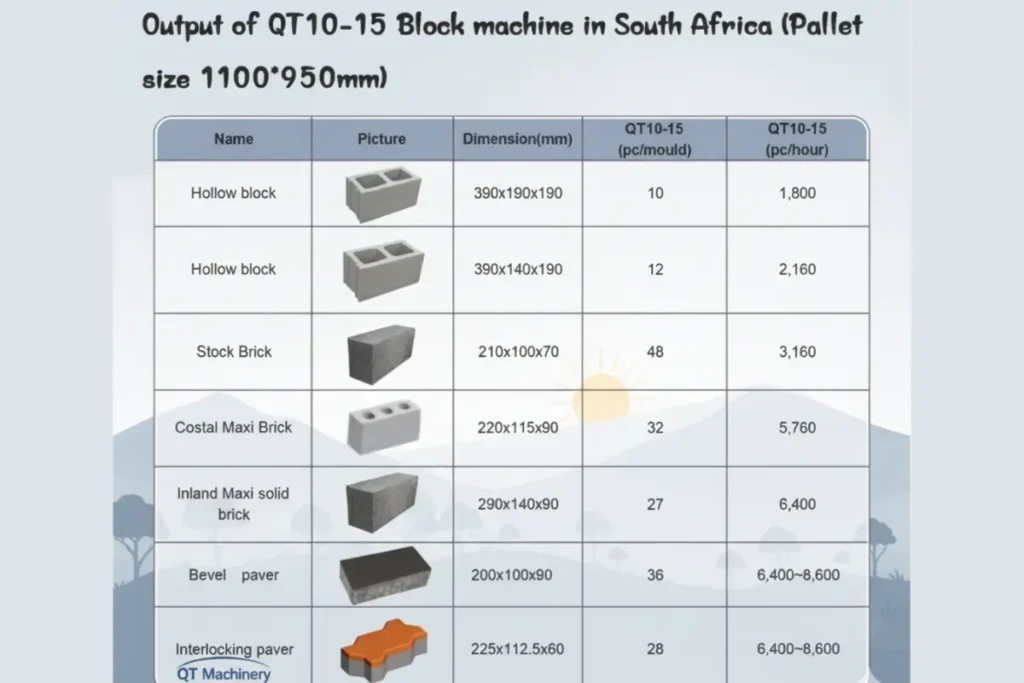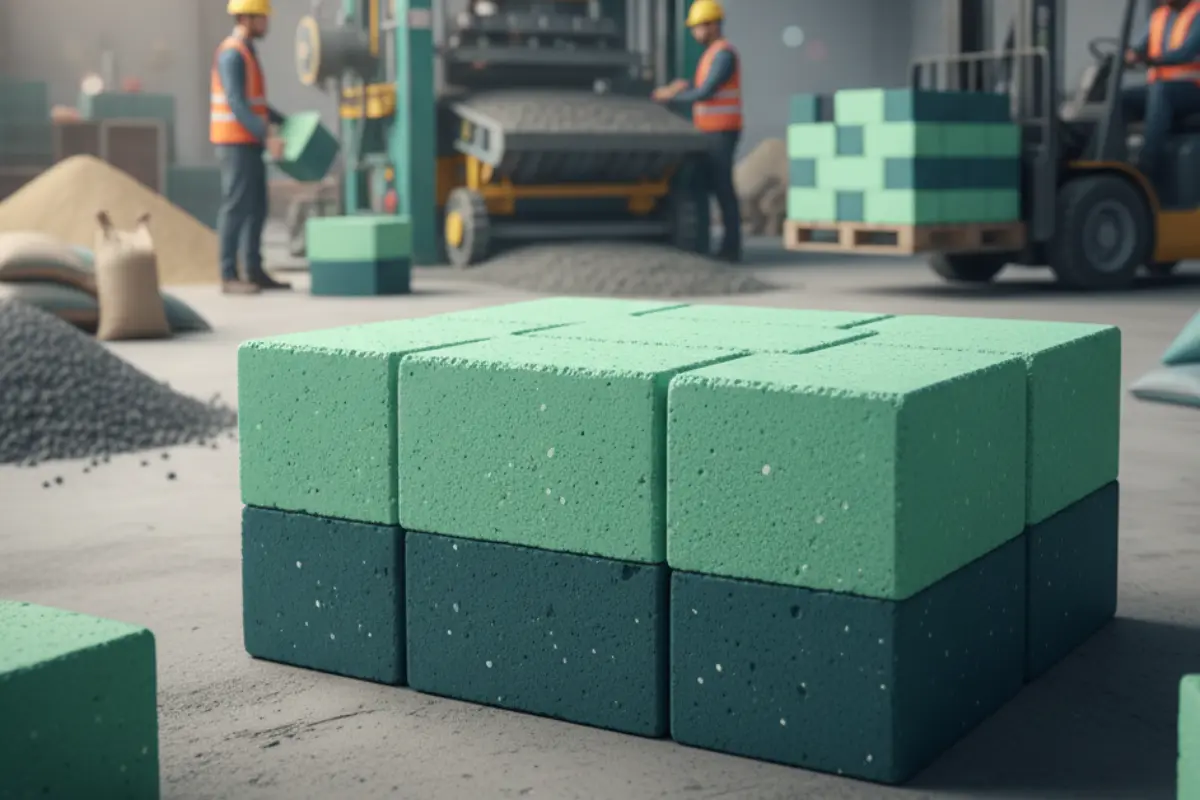Table of Contents
The Concrete Paver Block Manufacturing Process: A Step-by-Step Guide Discover the complete concrete paver block manufacturing process. Learn about raw materials, color mixing ratios, machinery, and quality control. Perfect for builders & DIY enthusiasts.**
The Complete Concrete Paver Block Manufacturing Process: From Raw Material to Finished Product
If you’ve ever walked on a beautiful driveway, a charming garden path, or a robust industrial yard, you’ve likely experienced the durability and aesthetic appeal of a concrete paver block. These interlocking pieces are a cornerstone of modern landscaping and construction. But have you ever wondered how these versatile blocks are made?
This comprehensive guide will take you through the entire concrete paver block manufacturing process. We’ll answer the what, why, where, how, and who, demystifying the journey from raw cement to the sturdy, colorful block in your hand. Whether you’re a construction professional, a student, or a curious homeowner, you’ll find this deep dive into the paver block world both enlightening and engaging.
What is a Concrete Paver Block?
Let’s start with the basics. A concrete paver block is a precast concrete product used for exterior paving applications. Unlike a monolithic concrete slab, these blocks are individual units that are laid down in an interlocking pattern. This interlocking design is key to their strength, distributing loads evenly across the surface.
Why are they so popular?
- Durability: They are highly resistant to weathering, heavy loads, and cracking.
- Permeability: When laid correctly, they allow water to seep through, reducing runoff.
- Aesthetic Variety: They come in countless shapes, sizes, colors, and textures.
- Easy Repair: Individual damaged blocks can be replaced without disturbing the entire paved area.
- Cost-Effective: Their long lifespan and low maintenance make them an economical choice over time.
Who is Involved in the Paver Block Industry?
The ecosystem of the paver block industry is diverse. It includes:
- Raw Material Suppliers: Providers of cement, aggregates, pigments, and additives.
- Paver Block Manufacturers: Companies that operate plants and oversee the production process.
- Civil Engineers & Architects: Professionals who specify the type and quality of concrete paver block for projects.
- Contractors & Landscapers: The experts who install the pavers on-site.
- Homeowners & Property Developers: The end-users who benefit from the final installed product.
Understanding this process is valuable for everyone in the chain, especially for those involved in project planning and cost estimation. For instance, accurate Row House Construction Estimation Excel Sheet can help budget for materials like pavers more effectively.
The Raw Materials: What Goes Into a Paver Block?
The quality of a concrete paver block is directly determined by the quality of its raw materials. The main components are:
- Cement: Acts as the binder. Ordinary Portland Cement (OPC) of grades 43 or 53 is commonly used.
- Aggregates: These make up the bulk of the mix (60-80%). This includes coarse aggregates (6mm-10mm) and fine aggregates (sand). The aggregates must be clean, hard, and free of impurities.
- Water: Must be clean and potable. The water-cement ratio is critical for strength.
- Pigments: Iron oxide pigments are used to add color to the paver block.
- Admixtures: Chemical additives like plasticizers or water-reducers are sometimes used to improve workability and strength without adding extra water.
The Heart of Aesthetics: Paver Block Colour Mixing Ratio
This is where science meets art. The color of a concrete paver block isn’t just a coating; it’s integrated throughout the entire block. This is achieved by adding dry, powdered iron oxide pigments to the concrete mix.
The paver block colour mixing ratio is typically expressed as a percentage of the cement’s weight. Getting this ratio right is crucial for consistent, long-lasting color.
Here’s a general guideline for pigment ratios:
| Desired Color Intensity | Pigment to Cement Ratio | Key Consideration |
|---|---|---|
| Light / Pastel Tones | 1% – 2% | Cost-effective, but color may fade over time and be less consistent. |
| Standard / Medium Tones | 3% – 4% | The most common range, offering a good balance of color vibrancy and cost. |
| Deep / Vibrant Tones | 5% – 6% | Provides rich, consistent color but significantly increases the cost of the paver block. |
Pro Tip: The base color of the cement and sand also affects the final hue. Using white cement instead of grey cement will produce much brighter and truer colors, especially for reds, yellows, and beiges.
The Concrete Paver Block Manufacturing Process: A Step-by-Step Guide
Now, let’s get to the core of the matter: how is a concrete paver block actually made? The modern manufacturing process is highly mechanized, ensuring precision, efficiency, and high quality. It can be broken down into seven key stages.
Step 1: Raw Material Batching and Measurement
This is the foundation of quality control. The ingredients—cement, aggregates, and pigment—are precisely measured by weight, not volume. This ensures a consistent mix proportion for every batch, which is vital for achieving uniform strength and color across all paver blocks. Automated batching systems use digital scales for extreme accuracy.
Step 2: Mixing the Concrete
The accurately weighed materials are fed into a heavy-duty mixer. There are two primary types of mixing used in paver block plants:
- Pan Mixer: Ideal for dry mixes, it creates a homogeneous blend, ensuring every particle of aggregate is coated with cement and pigment.
- Planetary Mixer: Also very effective, using rotating blades to mix the materials thoroughly.
Water is added very carefully. The consistency required for making pavers is a “semi-dry” or “no-slump” mix. It should be just wet enough to hold its shape when compressed but dry enough that it doesn’t flow or slump.
Step 3: Transporting the Mix to the Paver Block Machine
The mixed concrete is transferred from the mixer into a feed hopper, which is located above the paver block making machine. This is often done using a conveyor belt or a transfer cart. The hopper feeds the concrete into the machine’s mold cavity in a controlled manner.
Step 4: The Molding Process: Compaction and Vibration
This is the most critical step where the concrete paver block gets its shape and density. The machine’s mold, which defines the block’s shape (like zig-zag, I-shape, or cobble), is filled with the concrete mix.
The machine then employs two powerful forces:
- High-Frequency Vibration: The mold is vibrated at a high frequency. This causes the concrete particles to settle closely together, eliminating air pockets and voids.
- High Pressure: A hydraulic ram applies immense pressure (ranging from 100 to 300 kg/cm² or more) onto the concrete in the mold.
The combination of vibration and pressure results in an extremely dense and strong paver block right after it is ejected from the machine. This process is known as “vibro-compaction.”
Step 5: Curing the Paver Blocks
Freshly molded paver blocks are not yet strong enough to be used. They need to gain strength through a process called curing. The blocks are placed on steel pallets and transferred to a curing chamber.
Why is curing so important?
Curing maintains adequate moisture and temperature, allowing the cement to fully hydrate and develop its maximum potential strength. Properly cured blocks are harder, more durable, and more resistant to weathering.
There are two main curing methods:
- Steam Curing: Blocks are exposed to steam in a closed chamber. This accelerates the strength gain, allowing blocks to be ready for sale in just 24 hours.
- Water Curing: Blocks are sprayed with water or immersed in water tanks for several days. This is a more traditional method.
Step 6: Drying and Cooling
After the curing cycle is complete, the blocks are hot and saturated with moisture. They are allowed to dry and cool down to ambient temperature. This stabilizes the block and prepares it for the final steps.
Step 7: Quality Control, Cubing, and Dispatch
Before being sent out, the concrete paver block batches undergo rigorous quality control tests. Samples are checked for dimensions, strength (compressive and flexural), water absorption, and color consistency.
Once approved, the blocks are “cubed”—stacked neatly on wooden or metal pallets for easy handling and transport. These cubes are then wrapped and dispatched to distributors, retailers, or directly to construction sites. Proper estimation is key here; using tools like a Download Free Building Estimation Excel Sheet can help contractors manage inventory and costs efficiently.
Where Are Paver Blocks Used?

The application of concrete paver block is vast and varied. You can find them in:
- Residential Areas: Driveways, patios, walkways, pool decks, and garden paths.
- Commercial Spaces: Parking lots, plazas, pedestrian malls, and gas stations.
- Industrial Zones: Container yards, warehouse floors, and lorry parks where heavy loads are common.
- Public Works: Roadways, bus stops, cycle tracks, and airport aprons.
- Landscaping: Retaining walls, decorative features, and tree surrounds.
For complex projects that involve structural elements beyond paving, professionals often rely on detailed software for design and analysis, such as those explored in our guide on STAAD Pro Software Free Download 2025 or ETABS Software Free Download for Windows 10.
FAQs: People Also Ask About Paver Blocks
1. What is the typical compressive strength of a concrete paver block?
The compressive strength can vary, but for most residential applications, a minimum of 35 Mpa (Mega Pascals) is standard. For heavy-duty industrial traffic, strengths of 50 Mpa or higher are used.
2. How long does a paver block last?
A high-quality concrete paver block, when manufactured correctly and installed on a proper base, can last for several decades, often 25 years or more, with minimal maintenance.
3. Can I manufacture paver blocks on a small scale?
Yes, small-scale production is possible with a stationary paver block machine and basic equipment. It’s a popular small business venture in many regions. However, maintaining consistent quality requires strict adherence to mix ratios and procedures.
4. Why do some paver blocks fade in color over time?
Fading can occur due to the use of low-quality pigments, an incorrect paver block colour mixing ratio, or prolonged exposure to harsh UV rays from the sun. Using high-grade, UV-stable iron oxide pigments at the correct ratio minimizes fading.
5. What is the difference between a wet-cast and a vibro-compacted paver block?
The process described in this article is for vibro-compacted blocks, which use a semi-dry mix and high pressure, resulting in a dense, strong, and immediately stackable block. Wet-cast pavers use a more fluid concrete mix, are poured into molds, and often have a different texture and lower strength. Vibro-compacted is the industry standard for paving.
6. How can I ensure I’m buying quality pavers?
Always purchase from a reputable manufacturer who can provide test certificates for strength and absorption. Visually inspect the blocks for consistent color, sharp edges, and a dense, non-flaky surface.
Conclusion
The journey of a concrete paver block, from a pile of raw materials to a finished, colorful, and incredibly strong paving unit, is a fascinating blend of material science, precise engineering, and mechanical force. Understanding the concrete paver block manufacturing process—from the critical paver block colour mixing ratio to the intense vibro-compaction and proper curing—empowers you to make informed decisions, whether you’re specifying materials for a multi-million dollar project or simply choosing pavers for your own backyard.
This knowledge ensures that you appreciate not just the beauty of the final product, but also the robust engineering that makes a humble paver block a reliable and durable choice for surfacing our world. For those managing larger construction projects, leveraging tools for efficiency is key; learn more about How to Save Up to $5000 in Construction and explore software solutions like Revit Software for Civil Engineering Download to streamline your workflow from design to execution.
External Articles for Further Reading:
- Interlocking Concrete Pavement Institute (ICPI): Tech Specs – A great resource for technical specifications and installation guidelines.
- The Portland Cement Association: Concrete Pavers – Offers foundational knowledge on the materials and benefits of concrete pavers.

Hi! I’m Sandip, a civil engineer who loves sharing about Civil Engineering & new ideas and tips. My blog helps you learn about engineering in a fun and easy way!

